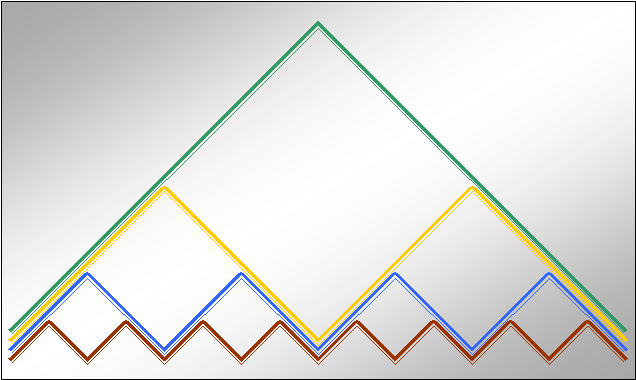This composition is, however, substantially more involved and correspondingly difficult to explain. Fortunately, its rich harmonies appear to facilitate hearing different levels of scaling with respect to phrasing.
In this case we will begin on the level of one measure. Because the symphony is written in
As in the Bach example, the first four measures go from tonic to dominant, followed by dominant to tonic.
| Amin | E | E | Amin |
This progression sets up a pattern of what is often referred to as tension-release. Moving from tonic to dominant gives rise to tension while moving back from dominant to tonic provides release.
Although the composition moves through many chordal changes, the sense of alternating movement we find in the first four measures gives us an indication of how we can divide the composition into natural and complementary phrases.
The map below represents the first 16 measures of the piece. Each side of the red triangular trace corresponds to 1 measure; blue sides are 2 measures; gold sides are 4 measures; and each green side is 8 measures. Following the traces from left to right, the vertices of each trace correspond to a transition between tension and release points.
 |
| Excerpt | Full second movement | ||
|
|
|
(Sequenced by H.-J. Roeder)
What is particularly interesting is how certain points in the composition can appear to provide tension or release depending on the scale at which we place it into context.(Thanks to Professor Michael Adelson, Cover Conductor for the New York Philharmonic and Conductor of the Auros Group for New Music in Boston, for his discovery and presentation of this example.)